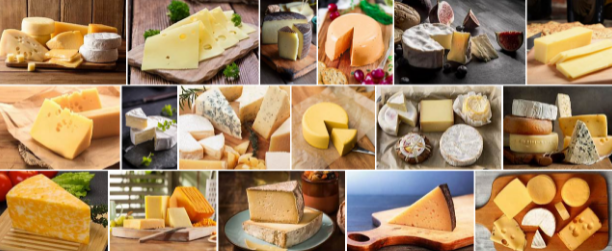Processed Cheese Vs. Natural Cheese: A Forecasted Surge Of Growth In The Natural Cheese Market
Cheese has become an indispensable part of many diets, may it be breakfast or dinner, failing to include cheese is not a routine of many. We all love and adore cheese but have you asked yourself what kind of cheese you are consuming and the impact it has on your health? This is not a common question that crosses the minds of most people. Instead, the level of craving they have for cheese recipe food gets the better of them.

However, as much as we tend to be ignorant of the cheese type-food we consume, some of the cheese ingredients are hazardous to our health. It is the high time we understood better the building blocks of natural and processed cheese before spending another dime on cheese-prepared foods. Here is a brief guide to cheese.
Research done on the types of cheese available in the market has shown that there two different types, that is, natural cheese and the processed cheese. These two sets contain different ingredients and can each impact our body in a positive or a negative perspective. You might not be aware but to burst the bubble for you, natural cheese is more beneficial than processed cheese.
Natural cheese is obtained from milk. It is composed of ingredients such as fresh milk, salt, enzymes, and natural colors. What’s worth noting is that no additives or preservatives are added to this set of cheese hence it’s entirely harmless and has a short shelf life.
On the other hand, processed cheese includes ingredients such as emulsifiers, enzymes, extra salt, artificial food dyes, sorbic acid (preservative), and saturated vegetable oils which are detrimental to human health. These preservatives are added with a motive to increase the cheese shelf life.
With people slowly reckoning the importance of natural cheese and shifting their attention towards that direction, the natural cheese market has been expanding exponentially. The paradigm shift in consumer preferences for products that bring nutritional benefits to their lifestyles has made the natural cheese industry renovate itself to satisfy the demand. Currently, it has rolled out a new technology that is cost-effective to tackle the issue of proper packaging.
The new technology tools look to solve the issue of lactic acid that renders a short life span for natural cheese. When the moisture content of fresh cheese exceeds 80%, it is exposed to lactic acid and in the long run, undergoes fermentation. To ensure that there is proper drainage and the problem is mitigated, natural cheese is packaged in PP (polypropylene and polyethylene) packages with slits at the slides, paraffin, or PVDC (polyvinylidene chloride) coated paper, PP aluminum laminated paper, and injection molded HDPE packages.
The packaging of cheese has been revolutionized by the innovation of polymers and plastic. Other packaging innovations for natural cheese put in place include sliders, reclosable zippers, and press -to-close tactics to ensure that the cheese stays fresh longer.
The innovations have triggered a boom in the sales of natural cheese as consumers are attracted by the high-scale packaging and have been convinced natural cheese curbs them from health issues. However, the sales of processed cheese seem to be on a downward curve but the processed cheese market still has the larger market share.
However, the natural cheese market has incidentally shown interest to increase its market value in due course. Globally, the market is forecasted to grow unprecedently between 2021 and 2027. It is largely segmented in North America, Europe, and Asia pacific.
In Europe, the natural cheese market is expected to reach $ 43.26 billion (as of 2023) while in the Asia Pacific, it is projected to grow at a CAGR of 5.08% within the (forecasted period.) This is attributed to the fact that the packaging has been improved and consumers are up for products that boost the immunity system.
Several food products have tunned to the natural cheese frequency rendering a surge in the consumption of natural cheese. Demand for cheese styles like Cheddar, Mozzarella, Monterrey Jack, and Parmesan has skyrocketed as showcased in many foods such as burgers, pizza, and sandwiches—that is not only loved by the millennials but anyone worth a craving.
Cheese is a wholesome and nutritious food that can be enjoyed by almost everyone. However, there are exceptional cases where some people have been restricted to only low sodium-containing foods. As noted, natural cheese does not contain preservatives rather small contents of sodium. Hence, it comes in handy to people instructed to consume little sodium in their diet.
Some of the low sodium cheese include; cream cheese, brick cheese, ricotta, and fresh mozzarella. To avoid complications such as high blood pressure as instructed by the doctor, cheese lovers are obliged to stick to the highlighted examples. High sodium levels could sometimes lead to kidney diseases, stroke, or hypertension but natural cheese is here to mitigate such issues.
Conclusion
Boosting your health status is essential. However, the level of fitness you have depends on the type of food products you consume. As discussed, processed cheese dims the candle of your health with additives but natural cheese is a good health booster as it contains no additives and it is well packaged. The natural cheese market is also spurring to a growth trajectory and is expected to hit a milestone as of 2021 and 2027. Imperatively, be observant of the amount of cheese you take, whether natural or processed cheese, excessive consumption is discouraged.



